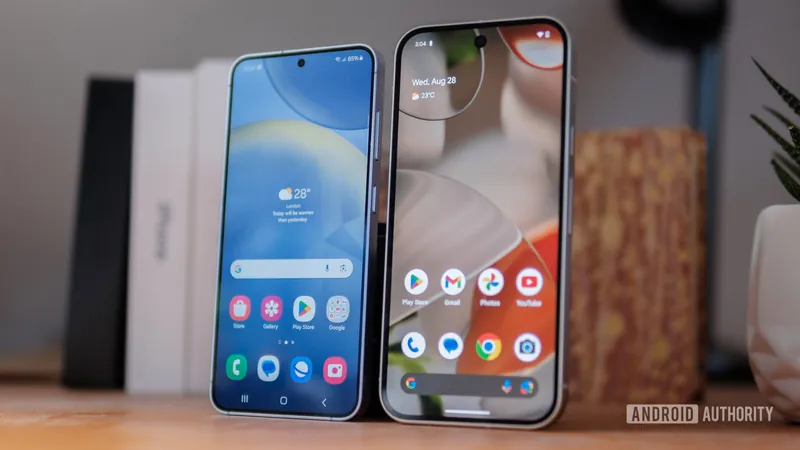
Android 15: The Evolution of Skins Amidst Exclusive Features for Pixel Users
2024-11-10
Author: Liam
As the buzz around Android 15 heightens, Pixel users are already savoring the latest updates—if you haven’t pressed that update button yet, now’s the time! However, for those with other smartphones, the wait for updates remains uncertain. The experience will likely be vastly different from that of Google’s Pixel devices, both in appearance and functionality.
For years, Pixel smartphones have boasted exclusive features like Call Screen and the latest advancements enabled by Google’s in-house Tensor chips. This shift has allowed Google to integrate sophisticated AI and photography functionalities exclusively into its Pixel lineup. Unfortunately, this means that other Android users may feel left out as they await their own updates, which often lack these novel features.
Diving into the recent Android 15 announcement reveals that while there are appealing additions like support for foldable devices and enhancements in Adaptive Vibration, many of these features will not be available outside of the Pixel ecosystem. Instead, a typical Android update for other devices will consist of incremental changes, such as improved SOS satellite calling and minor system tweaks, which may not excite most users.
Interestingly, the landscape of software updates has transformed; major OS upgrades are no longer the sole avenue for new features. Google’s Project Mainline has played a pivotal role in enabling the patching and upgrading of core system components without necessitating a complete OS update. This means users can enjoy several exciting features through the Play Store without having to wait for the next big upgrade.
The reality today is that innovations are often seen in real-time through system apps rather than traditional updates. For instance, Google introduced sophisticated tools like Circle to Search and UWB casting for Pixel users without the need for an Android overhaul. Meanwhile, iOS users are left to wait for significant updates, such as iOS 18, to experience new functionalities.
Despite this modular approach fostering rapid innovation, it has also diluted the identity of core Android versions. With much of Google's development focus laid firmly on Pixel devices, the broader Android ecosystem may potentially miss out on these advancements. For example, while major brands like Motorola and Xiaomi have started implementing features before receiving Android 15, smaller manufacturers could struggle to integrate new capabilities efficiently.
As Android skins like Samsung's One UI or OnePlus's OxygenOS evolve, they have become mini operating systems of their own. The shift towards exceptional features—ranging from AI and advanced security options to sophisticated media editing tools—has forced brands to redefine their unique selling points. In a world where Pixel-exclusive features are becoming increasingly desirable, manufacturers not equipped to compete with Google’s innovation may find themselves struggling in the mid-range market.
With this evolving landscape, consumers might be left wondering what the future holds for brands like ASUS, Motorola, and Sony, whose offerings might increasingly feel bland compared to those packed with Google-exclusive features. Although affordability remains crucial, the growing demand for advanced features poses a challenge for these brands as they strive to compete.
Ultimately, Google, as the custodian of Android, does not owe any additional features to the broader Android community. While it continues to ensure essential upgrades for security and APIs, OEMs must rise to the occasion and broaden their innovation umbrella. What remains clear is that as the Android ecosystem adapts, the differentiation between brands and experiences becomes more prominent than ever. It will be fascinating to watch how each manufacturer navigates this complex landscape and how their take on Android 15 shapes the user’s experience in the near future. So get ready; the race for Android supremacy is just heating up!









 Brasil (PT)
Brasil (PT)
 Canada (EN)
Canada (EN)
 Chile (ES)
Chile (ES)
 España (ES)
España (ES)
 France (FR)
France (FR)
 Hong Kong (EN)
Hong Kong (EN)
 Italia (IT)
Italia (IT)
 日本 (JA)
日本 (JA)
 Magyarország (HU)
Magyarország (HU)
 Norge (NO)
Norge (NO)
 Polska (PL)
Polska (PL)
 Schweiz (DE)
Schweiz (DE)
 Singapore (EN)
Singapore (EN)
 Sverige (SV)
Sverige (SV)
 Suomi (FI)
Suomi (FI)
 Türkiye (TR)
Türkiye (TR)